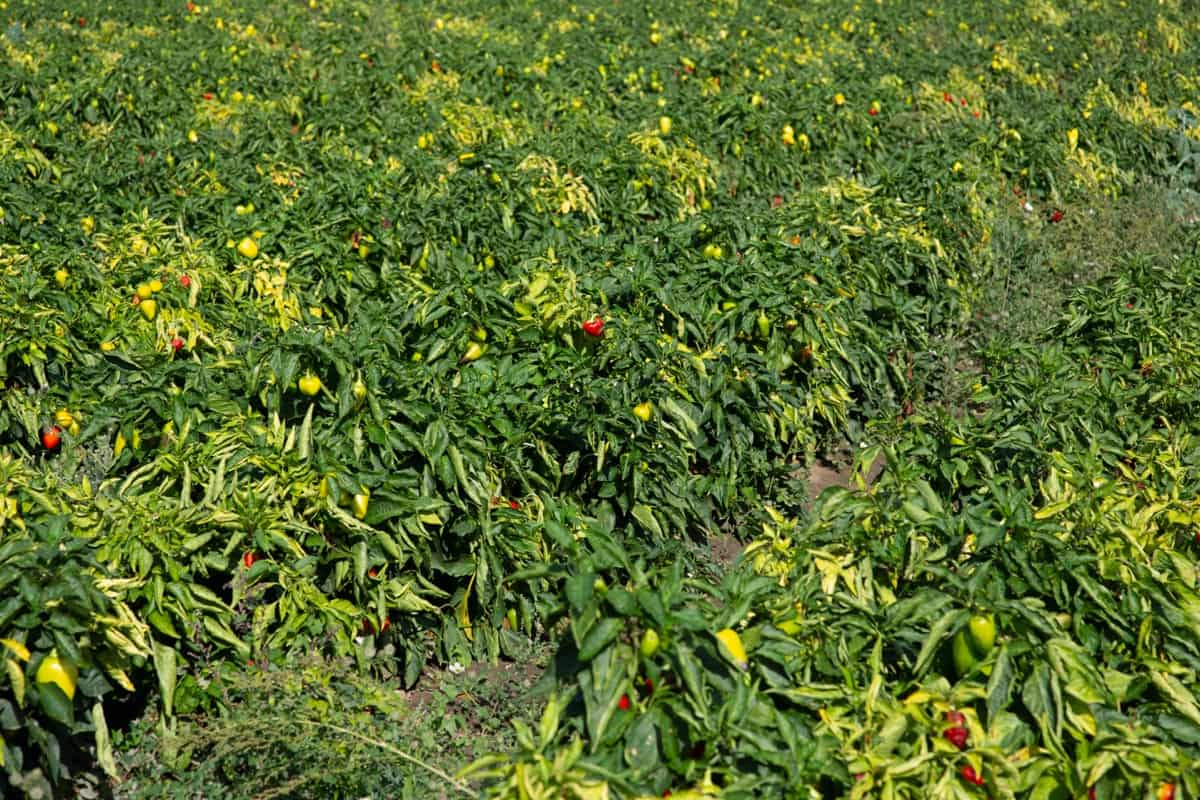Chili pepper farming can be lucrative in Florida, especially given the demand for hot peppers in local and regional markets. However, like any other crop, Chili pepper farming requires careful planning and management to ensure a successful harvest. Below we learn when and how to plant Chili Peppers in Florida and a step-by-step guide to starting your own Chili Pepper Farm.

How to Start Chili Pepper Farming in Florida: A Step-by-Step Growing Guide
Right Chili Pepper Variety
The first step in Chili pepper farming is choosing the right variety to thrive in the Florida climate. Some of Florida’s most popular Chili pepper varieties include habanero, jalapeno, cayenne, and poblano. However, there are many other varieties, each with a unique flavor and heat level. When selecting a variety, it is important to consider factors such as disease resistance, yield potential, and market demand. Choosing a variety suitable for your location’s soil type, climate, and growing conditions is also important.
Land Preparation
Chili pepper plants require well-draining soil that is rich in organic matter. Before planting, it is important to prepare the soil by tilling it to a depth of at least 8 inches and adding compost or other organic matter. Testing the soil’s pH level and adjusting it as necessary is also important. Chili peppers prefer slightly acidic soil with a pH between 6.0 and 6.5.
Plant the Chili Pepper Seeds
Chili pepper seeds can be started indoors or directly sown in the field. If starting indoors, sow the seeds in trays or pots filled with sterile seed-starting mix. Keep the soil moist and warm (around 70°F) until the seeds germinate. If planting directly in the field, wait until the soil temperature reaches at least 60°F before sowing the seeds. Plant the seeds about ¼ inch deep and 18 to 24 inches apart in 24 to 36 inches apart.
Provide Adequate Water and Nutrients
Chili pepper plants require regular watering, especially during dry spells. But you shouldn’t water too much because that can cause root rot and other diseases. A general rule of thumb is to water the plants deeply once a week or as needed. Chili peppers also require adequate nutrients to grow and produce fruit. Fertilize the plants with a balanced fertilizer (such as a 10-10-10) once a month during the growing season. Be sure to follow the manufacturer’s instructions for application rates and timing.
Control Pests and Diseases
Chili peppers are susceptible to several pests and diseases, including aphids, spider mites, and fungal infections. To prevent these problems, monitor the plants regularly and take action at the first sign of infestation. One effective method of pest control is to use companion planting. Planting herbs such as basil, oregano, and cilantro near the Chili pepper plants can help to repel pests and improve soil health.
Harvesting
Chili peppers typically mature 60 to 90 days after planting, depending on the variety. The peppers should be harvested when fully ripe and have reached their desired size and heat level. This can be determined by color (green to red, depending on the variety), size, and firmness. To harvest the peppers, use pruning shears or scissors to cut the stem just above the fruit. Wear gloves and don’t touch your eyes or face when you’re handling peppers because the capsaicin in them can be irritating.
In case you missed it: How to Start Chili Pepper Farming in California: A Step-By-Step Growing Guide

Marketing
Once the Chili peppers are harvested, they must be properly stored and marketed. Chili peppers should be stored in a cool, dry place away from direct sunlight. They can be sold fresh at local markets or dried and sold as a spice. To market the Chili peppers, it is important to establish relationships with local retailers, chefs, and other potential buyers.
Consider setting up a website or social media account to promote your product and connect with potential customers. In addition, it is important to keep track of your expenses and revenue to ensure that your Chili pepper farming business is profitable. Keep detailed records of your inputs (such as seeds, fertilizer, and labor) and your outputs (such as yield and sales).
In case you missed it: How to Start Chili Pepper Farming in Texas: A Step-By-Step Growing Guide

Conclusion
Starting a Chili pepper farm in Florida can be a rewarding and profitable venture. By following these steps and procedures, you can ensure that your Chili pepper plants thrive and produce a bountiful harvest. With careful planning and management, you can establish a successful Chili pepper farming business that meets the demand for spicy peppers in local and regional markets.
- Feed Your Flock for Less: Top 10 Tips to Save on Chicken Feed
- Ultimate Guide to Ossabaw Island Hog: Breeding, Raising, Diet, and Care
- Hatching Answers: The Top 10 Reasons Your Chickens Aren’t Laying Eggs
- Eggs and Economics: Breaking Down the Cost of Raising Backyard Chickens
- Defend Your Greens: Proven Methods to Keep Iguanas Out of Your Garden
- Ultimate Guide to Cinnamon Queen Chicken: A Comprehensive Guide for Beginners
- Ultimate Guide to California Tan Chicken: Breeding, Raising, Diet, Egg-Production and Care
- Ultimate Guide to Marsh Daisy Chicken: Breeding, Raising, Diet, and Care
- 10 Types of Chicken Farming Businesses You Can Start for Profits